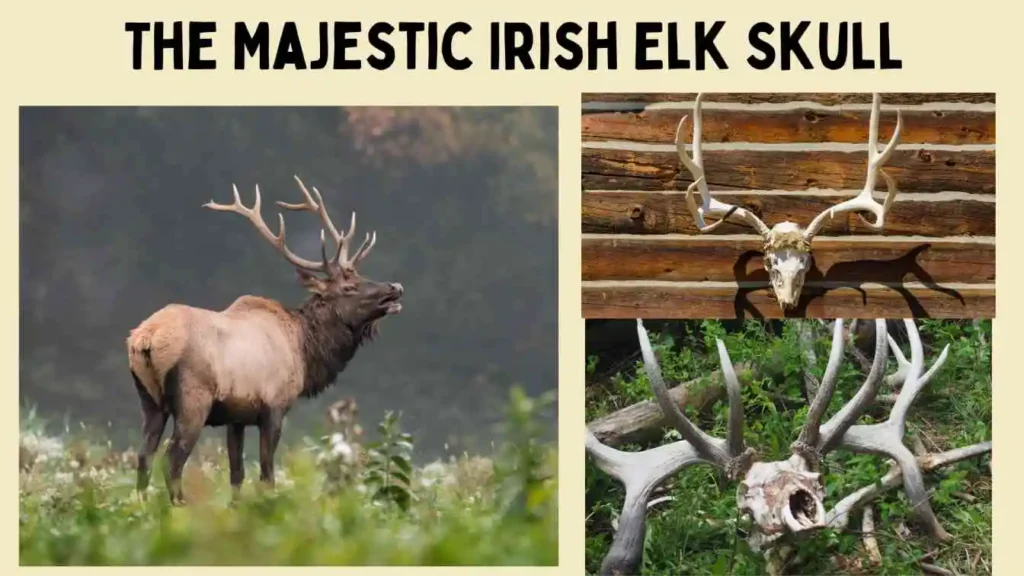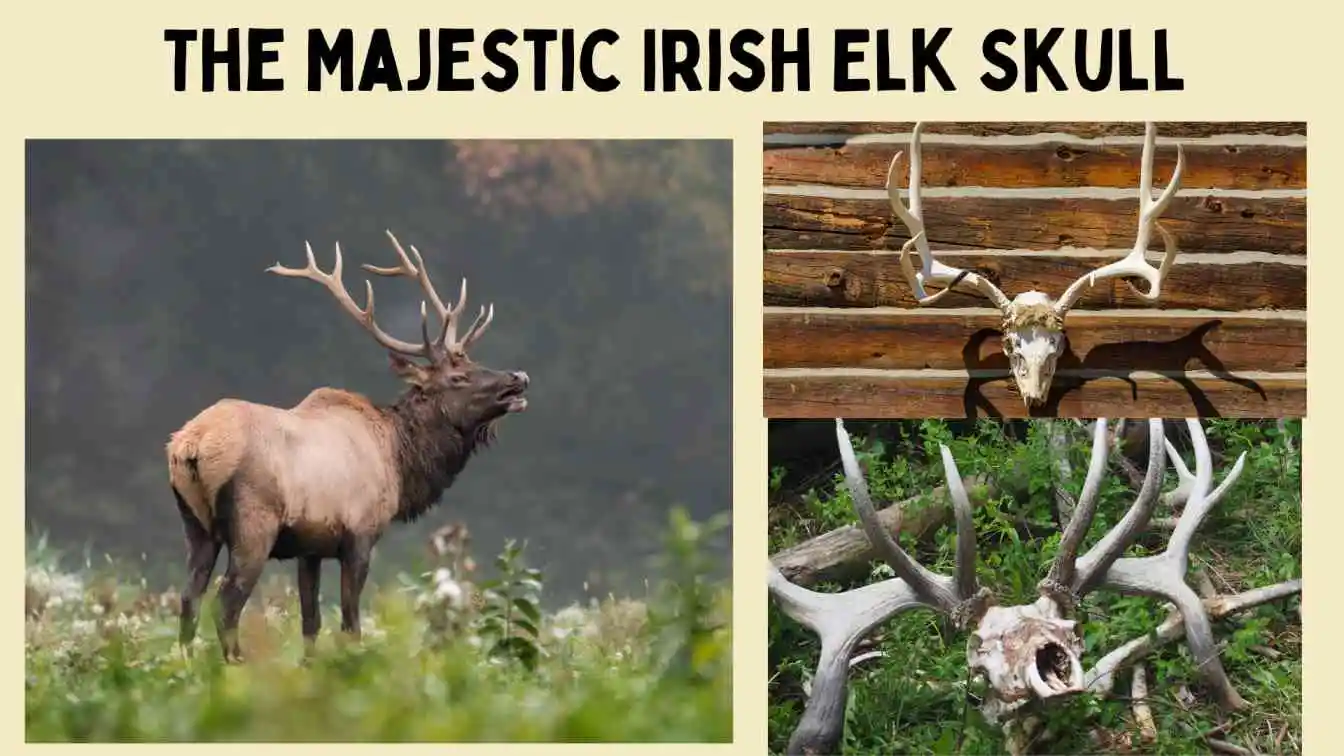Irish Elk Skull, with their glorious prongs and forcing size, have long enamored the creative minds of researchers and fans the same. These relics from the past proposition a brief look into the universe of the Pleistocene age, where monster warm-blooded creatures meandered the Earth.

How about we dive into the set of experiences, importance, and interest encompassing these antiquated antiquities
Introduction to Irish Elk Skull
The Irish Elk, scientifically known as Megaloceros giganteus, was not an elk but a species of deer. Its name stemmed from its frequent discoveries in Ireland and its elk-like size. Despite being extinct for thousands of years, its remains continue to intrigue researchers and the public.
History and Discovery
The Magnificent Irish Elk
With guys showing tusks up to 12 feet in length, the Irish Elk was one of the greatest deer species to have at any point lived. Between 2.6 quite a while back, during the Pleistocene age, these eminent creatures meandered over Eurasia.
Uncovering the Fossilized Remaining parts
Irish elk remains were first found in record opportunity in Ireland in the mid-1800s. From that point forward, countless fossils have been found in Asia and Europe, offering significant new data on the morphology and conduct of the species.
Physical Characteristics
Size and Dimensions
Irish Elk were tall animals, with some standing over seven feet tall at the shoulder. They could easily navigate a variety of terrains thanks to their long legs and strong body.
Antlers: An Amazing characteristic
The Irish Elk’s remarkably enormous antlers were among its most remarkable characteristics. During mating rituals, these intricately branching constructions functioned as emblems of authority in addition to being utilized for exhibition.
Behavior and Habitat
Paleolithic Setting
The terrain was very different from what it is today during the Pleistocene epoch. Open forests and meadows were home to Irish Elk, who fed on the surrounding flora.
Feeding Habits
Analysis of fossilized teeth suggests that Irish Elk primarily fed on grasses, shrubs, and leaves. Their diet played a crucial role in shaping the ecosystems of their time.
Scientific Significance
Evolutionary Insights
Investigating the remnants of Irish elk yields important insights about the evolutionary background of deer species. The adaptations that allowed these organisms to flourish in their habitats are revealed through comparisons with their contemporary counterparts.
Studies of the Fossil Record
Paleontologists rely heavily on Irish Elk fossils to rebuild historical ecosystems and comprehend the behavior of extinct faunas.
Cultural and Legendary Importance
Old Stories and Legends
The Irish Elk has been portrayed in several myths and folklore throughout history. It was seen as a sign of fertility and power in various civilizations.
Modern Interpretations
The Irish Elk is still a prominent figure in popular culture, literature, and art in today’s society. Its picture is frequently used to conjure up feelings of enigmatic grandeur and antiquity.
Preservation Activities
Maintaining Fossil Specimens
To protect Irish Elk fossils for future generations, efforts are being made. Extensive collections for research and teaching are housed in museums and research organizations worldwide.
Initiatives for Education
Awareness-raising educational initiatives on the demise of megafauna and the consequences for contemporary conservation are becoming more popular. We can better safeguard endangered animals now by using lessons from the past.
Irish Elk Skulls in Art and Media
Depictions in Artworks
Irish Elk skulls have inspired artists for centuries, appearing in paintings, sculptures, and other creative works. Their striking appearance symbolizes the beauty and majesty of the natural world.
Influence in Popular Culture
From literature to film, references to the Irish Elk abound in popular culture. Its iconic silhouette and formidable antlers have become synonymous with prehistoric times.
Irish Elk Skull Collecting
Enthusiast Communities
The historical and artistic worth of Irish Elk skulls attracts collectors and enthusiasts from all over the world. Social media groups and online forums offer venues for exchanging experiences and information.
Moral Aspects to Take into Account
Although gathering Irish Elk skulls can be a fulfilling pastime, moral issues need to be taken into mind. Sustaining the conservation of these relics requires ethical procurement practices and compliance with laws.
Notable Finds and Exhibits
Famous Specimens
Over the years, several remarkably preserved Irish Elk specimens have been found and have captivated audiences in museums and exhibitions.
Institutions and Museums
Prominent research institutes and museums display fossilized Irish Elk remains in their paleontological collections, giving guests a close-up look at these ancient artifacts.
The Fascination with Megafauna
Human Fascination with Giants
Megafauna, such as the enormous dinosaurs of antiquity and the mammoths of the Ice Age, has long captivated human curiosity. Science and the arts are still inspired by the beauty of these enormous beings.
A Look Back at Extinction
The demise of megafauna provides a sobering reminder of how fleeting life is on our planet. We may learn important lessons about the causes of biodiversity loss and how to counteract them by researching historical extinctions.
Final Short
The size and intricacy of Earth’s history are demonstrated by the Irish Elk Skull. We are better able to appreciate the marvels of evolution and the interconnectivity of life on Earth as a result of examining these ancient artifacts.
